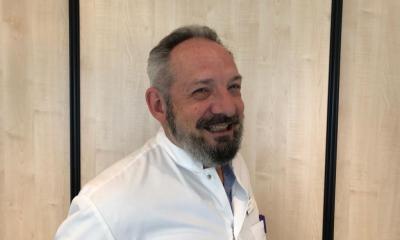New procedure
Scoliosis: fewer surgeries for kids
Scoliosis – typically defined as the curvature of the spine— affects around 3 out of every 100 people. While most cases of scoliosis are mild, some children develop spine deformities that continue to get more severe as they grow. An especially severe spinal curve can reduce the amount of space within the chest, making it difficult for the lungs to function properly.

Whether the case is severe or mild, the long-lasting effects of scoliosis can be damaging. James Barsi, M.D. Assistant Professor of Orthopeadic Surgery, Stony Brook Medicine, notes a new treatment that can drastically improve the quality of life for patients.
“The new MAGEC (MAGnetic Expansion Control) Spinal Growing Rod is a novel technology and a giant leap forward in the treatment of progressive early onset scoliosis,” says Dr. Barsi, who along with David Wallach, M.D., Assistant Professor of Orthopaedic Surgery and Wesley Carrion, M.D., Assistant Professor of Orthopaedic Surgery, performed the first MAGEC procedures in Suffolk County this summer. “We are thrilled that Stony Brook can perform this state-of-the-art surgery to provide our patients with top-notch care in Long Island and beyond.”
The MAGEC Spinal Growing Rod is a minimally-invasive treatment for children with early onset scoliosis. After the initial procedure to implant the rod, doctors use an external remote control outside of the body to lengthen the magnetically controlled rod as a child grows.
Traditional treatment uses rods that require surgeries about twice a year to manually lengthen the rod while a child is still growing. With the growing rod, the rod is magnetically controlled with the external remote control, so Stony Brook Medicine orthopaedic surgeons can lengthen the rod in a non-invasive way during a child’s course of treatment.
At Stony Brook, Dr. Barsi notes, “The surgery is less invasive, making the adjustments easier for patients during their course of treatment because they need fewer surgeries. This results in less time for the procedure, and less pain for the patient.”
Growing rods have become effective tools for children whose spinal curvature is too significant to control with bracing or casting. The rods—which are surgically attached to the spine above and below the curve and then lengthened during follow-up surgical procedures—allow the spine to continue growing while managing the curve until the child is old enough for spinal fusion.
The MAGEC rod is approved for children with scoliosis greater than 50 degrees in magnitude and under 10 years of age.
Source: Stony Brook Medicine
04.01.2016











